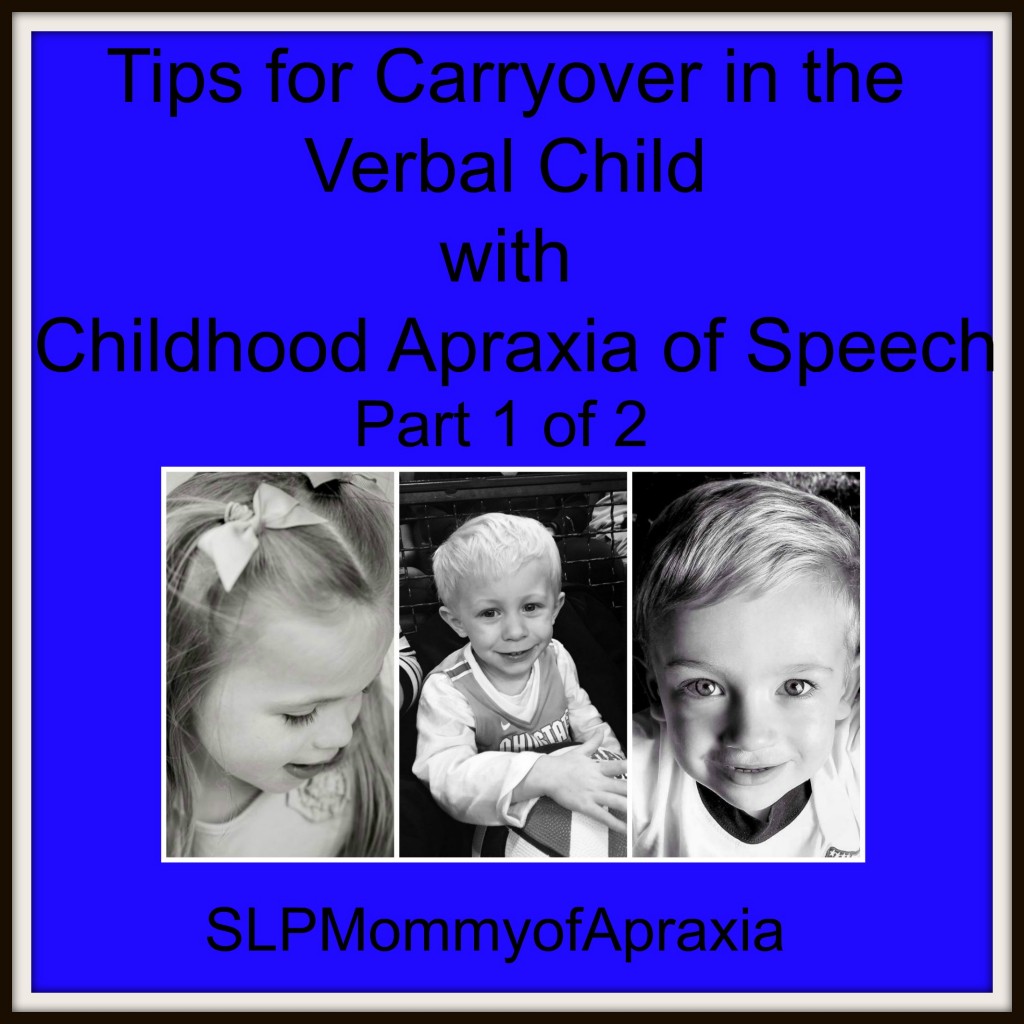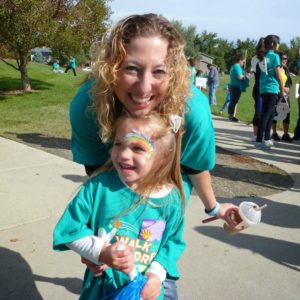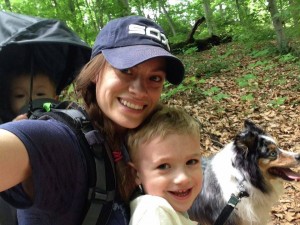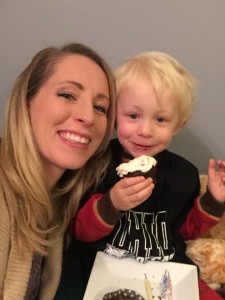Tips for Carryover in Childhood Apraxia of Speech: PART 1 of 2
Thanks to the internet, I went from feeling I was the only SLP mommy of apraxia in the world, to meeting one other, to now knowing many others! One year ago, I teamed up with one of them to write “Strategies to Promote Speech and Language in the minimally verbal or pre-verbal child with suspected Childhood Apraxia of Speech.”
Today, I’ve teamed up with two other SLP moms of apraxia to write a similar post for the verbal child with Apraxia of Speech. Nicole Quaka and Kimberly Peterman are two fellow SLP’s who have a child with CAS.
Many parents and professionals are concerned about home practice.
Somewhere along the course of my career, I picked up the advice that parents can pick a time of day for maybe 10 minutes that they can set aside for home speech practice. The idea was that it seems practical, parents can do this, and it’s not (hopefully) overwhelming.
The more I have now learned about apraxia of speech, I definitely don’t agree with or like my old advice. Parents are an integral part of the therapy team, especially with CAS. Research is consistently pointing to the importance of something called “distributed practice” in facilitating carryover and generalization of speech skills. In short, kids will make progress, but kids will make faster progress using practice schedules based on motor learning theory that include a principles such as mass versus distributed practice.
To me, setting aside 10 minutes a day was not overwhelming and seemed very doable, but the more I tried the more I realized it wasn’t practical. To just work on speech ten minutes a day, meant I was missing out on about 12 hours of actual communication time that could also be used as speech practice. Speech homework from therapists seemed boring, tedious, and it put strain on our relationship because while the work they did in therapy was great, I personally do not have the same style as the therapist and the dynamic of my relationship with my son was much different than the way the homework presented our relationship. It felt forced and it made our communication relationship feel unnatural. I realized that we all felt better and more confident when we did speech work as it came up in everyday situations. I could teach him so much more when he was ready to learn in the moment rather than pulling him aside and asking him to do speech.
For us, home practice is very rarely structured or a specific time set aside each day. From an SLP perspective, the idea of setting aside 10 minutes each day to devote to home practice sounds great – like an extension of a formal therapy session or a mini session. But now that I’m on the other side of the equation, it’s not terribly practical and it’s not what I want to be doing with my son. We work on his speech goals all day long, weaving them into our play, our meals, our drive times – in authentic communication situations. I’ll leave the more structured therapy approaches and practice for his “speech teacher,” while I choose to work on these same goals in our everyday routine and play.
What is Motor Learning Theory and why does it matter?
Research coming out of the apraxia realm talks more and more about the theory of motor learning and it’s importance in the treatment of motor speech disorders.
As I was talking to my SLP mommy of apraxia friends, I wanted to know one day how much practice they did at home. For me, once I knew Ashlynn was able to produce a sound, sound combination, or word correctly, I always corrected her after that….every…single…time. That seemed a bit extreme maybe, I thought. Turns out, Nicole and Kimberly do the same exact thing.
It does sound extreme, but there is also a certain ‘dance’ that goes along with knowing your child and knowing HOW to correct in that moment that makes it okay. I will gently correct (or at least model the correct way) every time, however I do not do it in a way that could be embarrassing to him or that makes him feel like he failed. If I notice that his non-verbal signs are showing me he is feeling a little upset at me correcting it, I simply will model the correct way using a hand gesture that represents and emphasizes the sound he left out and leave it at that and we all move on and he, so far, has always been ok with me modeling anytime he slips. There have been times when he has smiled and told me “no, it is this way…” just being silly. I smile and say “that IS silly isn’t it? Instead of saying it with your fat, fluffy sound you said it with your smiley windy sound.” then we both laugh, I model the correct way and move on. I don’t argue with him or discourage him. It is a fine line, but once you’ve been doing the dance for a while it gets easier.
Yes, this can be exhausting but is necessary to help keep G moving forward. For him, consonant blends are the skill that he has but often slips up on. I know that he can say them correctly, so I’m always on the lookout for them – both when he has an error and when he produces it correctly. I’ll repeat back an errored word, which he’ll often imitate correctly. Similarly, if he says a blend correctly, sometimes I’ll elicit it again a few more times to achieve additional correct productions, and thus strengthen that correct motor plan a bit more. I try to do this in as natural of a way as possible, working it into our conversation. In addition, it’s just as important to recognize when to ask for a correct production and when to let it slide. If he’s tried to repeat it back four or five times and still isn’t getting it, I’ll recognize his effort (he is trying very hard!), and then continue playing. I don’t want to lose a genuine moment of fun by asking him to repeat a word too many times. I’ll make a mental note to mention that skill to his SLP and/or practice it in a different way at another point in time.
What is mass versus distributed practice and how did it work for you?
So let me explain the quick and dirty on this. To put it simply, mass practice is getting in as many repetitions as possible of a child’s speech targets to solidify it in the motor plan, and distributed practice is where a child practices their targets across speech sessions, throughout the day, or throughout their week to get carryover and generalization.
We did more mass practice in addition to our distributed practice in the beginning when my son was learning how to say sounds and combine them with other sounds. This helped tremendously, but now that he can consistently say those sounds in many word and sentence combinations I try to catch him anytime he slips. I don’t want him to lose those sounds ever again. Might sound extreme, but I’m sure many parents of children with apraxia can agree that the thought of losing sounds and words that they spent so much time practicing is scarier than keeping up on it and gently correcting them when they need it.
Even though a 10 minute speech homework session could technically be considered distributed practice in the sense that it is in a different context, it’s still in a structured activity. Ideally, parents should be working on speech targets throughout the child’s day. Does that mean you need to be SLP’s like us? Not at all, but it does mean you need to have a clear idea of your child’s weekly speech targets!
Yes! The speech therapist chose those targets for a reason and are leaving some for later for a reason too. If you have questions, ask your SLP why they chose those targets. Maybe you are seeing different problems at home. You need to keep an open line of communication just like they need to keep an open line of communication with you.
While I view our home practice as largely distributed practice, I do sneak in small bouts of mass practice when possible as a way to help strengthen the correct motor plans for his speech and language skills. I like to call this “seizing the moment.” For example, if he’s in a good mood and will practice a word/phrase that he’s struggling with, we will repeat it five to six times in that moment, using funny voices and big gestures (anything fun!) for as long as he’ll play along. This is especially true for his speech goals, like vowel sounds, medial/final sounds, and consonant blends. A specific example is when we play Bingo, and since I know he has difficulty rounding his lips for the long “o” sound at the end of that word, we yell “Bingo!” very loudly and many times when one of us wins the game. It’s fun for both of us and he practices that vowel sound at least a dozen times when someone wins.
Tune into tomorrow when I post Part 2: Turning theory into practice; when three of us SLP mommies discuss what we actually do in our own homes. A few things might surprise you! There is guaranteed to be good information for both parents and SLP’s.



